0.1 Parts of a guitar (remastered) 2018 Blog addon entry (Part 2)
Hey fellow travelers,
This is JVHteach in 2018 . As you may or may not know, I recently uploaded a remastered video from my JVHteach video archive about the parts of a guitar. This is my second add-on to that video.
Because of the quality of the main video (although remastered and upscaled) I wanted to ad a couple of things to the main video from this post. This might therefore be a better readable and understandable story, as my english in the video at the time wasn't the best.
You could say this blog-post is the free DLC. (And no lootboxes either, yeeeh!)
Let's start with part 2!
A guitar is compiled from different parts, these are:
- The headstock (universal) (Part 1)
- The nut (universal) (Part 1)
- The neck (universal) (Part 1)
- The frets (universal) (Part 1)
These are the parts I mentioned in my first blog entry about the parts of a guitar, wich you can read here:
https://steemit.com/music/@jvhteach/0-1-parts-of-a-guitar-remastered-2018-blog-addon-entry
- The body (universal) (Part 2)
- The bridge (universal) (Part 2)
- The sound-hole (acoustic, semi-acoustic) (Part 2)
- The equalizer (mostly acoustic, semi acoustic, some electric) (Part 2)
- The whammy bar (electric) (Part 2)
- The Floyd-rose (electric) (Part 2)
- The pick-ups (electric, semi acoustic)
- The tone regulator (electric)
- The volume regulator (electric)
- The input jack (electric, semi acoustic)
- The pick-up switch (electric)
I've also added in which guitar the parts are mainly used, although there are some exceptions in these.
The next part we are gonna talk about is the body.

No, not that kind of body, you perv!
The guitar body is available in multiple sizes and shapes. The shape may or may not have an effect on the sound of the guitar. These are some examples:
You got the solid body guitar.
A solid body guitar is used a lot in the production of electric guitars and means that the body of the guitar is made out of a solid piece of wood. This can be made in different shapes and sizes.
You got the hollow body guitar.
A hollow body guitar is used a lot in the production of acoustic guitars, because of the big resonance it produces. Because these guitars are often not amplified, it helps creating natural amplification and is great creating a warm tone which shapes the sound of the acoustic guitar. The body itself is often hollow on the inside and contains some shape of sound-hole.
You got the semi-hollow body guitar.
This is a combination of the two builds and therefore used in the electric and in the acoustic guitars. The semi-hollow guitar has more space for resonance as the solid body, because of the hollow spaces, but also often carries a solid block of wood in the center of the guitar. This creates the sustain and stops feedback (the high pitch beep you often hear from speakers and microphones) similar to that of a solid body guitar, but with a fuller tone because of the resonance of an hollow build guitar. The semi-hollow guitar also often contains an electronic element (like the electric guitar) combined with the hollow space in the guitar.
Time for a fancy picture:
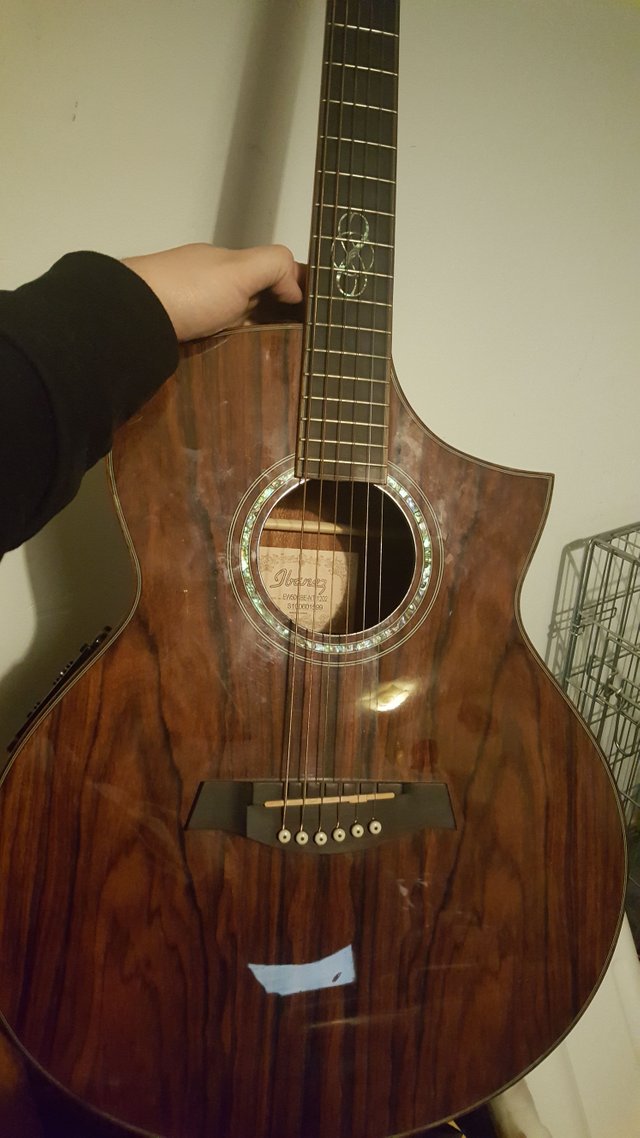
On this picture you can clearly see the beautiful body of the acoustic guitar. Although this guitar contains some electric elements build in, it's a hollow body guitar. On the picture you can also see the sound-hole, the bridge and the strings.
Let's get inside the the sound-hole
The sound-hole is the hole in the body which amplifies the sound-waves of your guitar. When you don't have an electric amplification in your guitar, your sound must somehow be strengthened so people can hear it. The sound-hole makes it so that you can clearly hear the sound even without electric amplification. In semi-hollow body guitars the holes are normally smaller, to ad some electronics. But the workings are the same.
The bigger the hole, the bigger the natural amplification.
Let's cross the bridge
When looking at the bridge there are all kind of variations available. The thing they got in common is that it holds the strings, guiding them over the sound-hole or pick-ups over the neck to the headstock.
You got different kinds of bridges. On the picture you see a simple bridge from a acoustic guitar. This is the most standard version of a bridge. You also got these kind of bridges for electric guitars. These are called fixed or hardtail bridges. The main thing about these bridges is that there is no tremolo arm which can raise or lower the note.

What the f*ck is the tremolo arm?
The tremolo arm (or sometimes also called the whammy bar) is something you see a lot on electric guitars. It usually is a long bar attached to the bridge which gives you the option to manipulate the vibrations of your sound. It's also the thing that makes it possible to make your guitar squeal.
These bridges are called tremolo bridges. Some of them can raise and lower a note and some can only lower a note, but not raise it. A great thing about these bridges are that they are especially created to be able to keep a note in a steady tuning even when you bend your string like crazy.
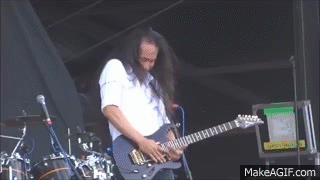
You see? Still in tune!
One of the most popular models of bridges:
- The hard-tails (which is attached stuck to the guitar)
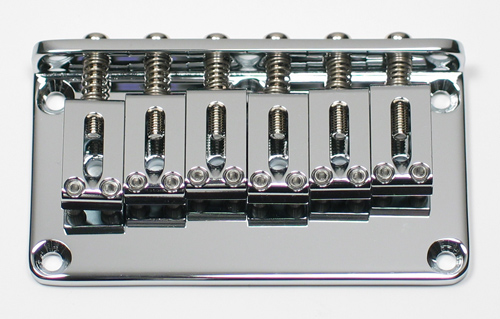
- The Floyd-Rose (which can raise and lower the string, and has lockers to keep the strings in tune and fine-tuners on the bridge for even a preciser way of tuning)
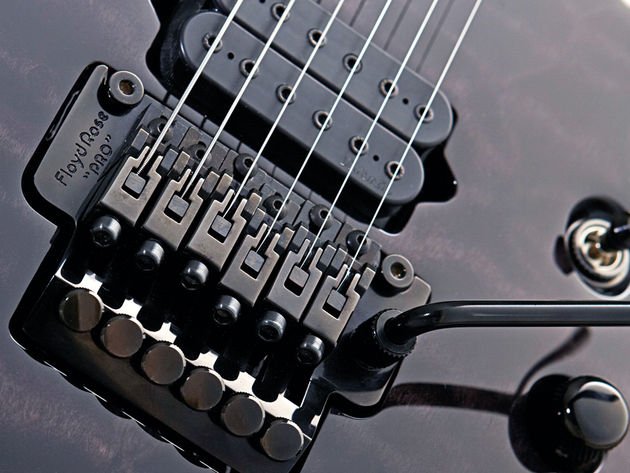
- Evertune, a bridge containing springs and lockers which, while being played, automatically keep your guitar in the same tuning. Whatever you do, once set-up it will keep this tuning no matter what. If you wan't to bend your string, it needs to be specially set-up for that. Because the evertune will otherwise adjust the string, so there is no change in sound even when the string is completely bended.
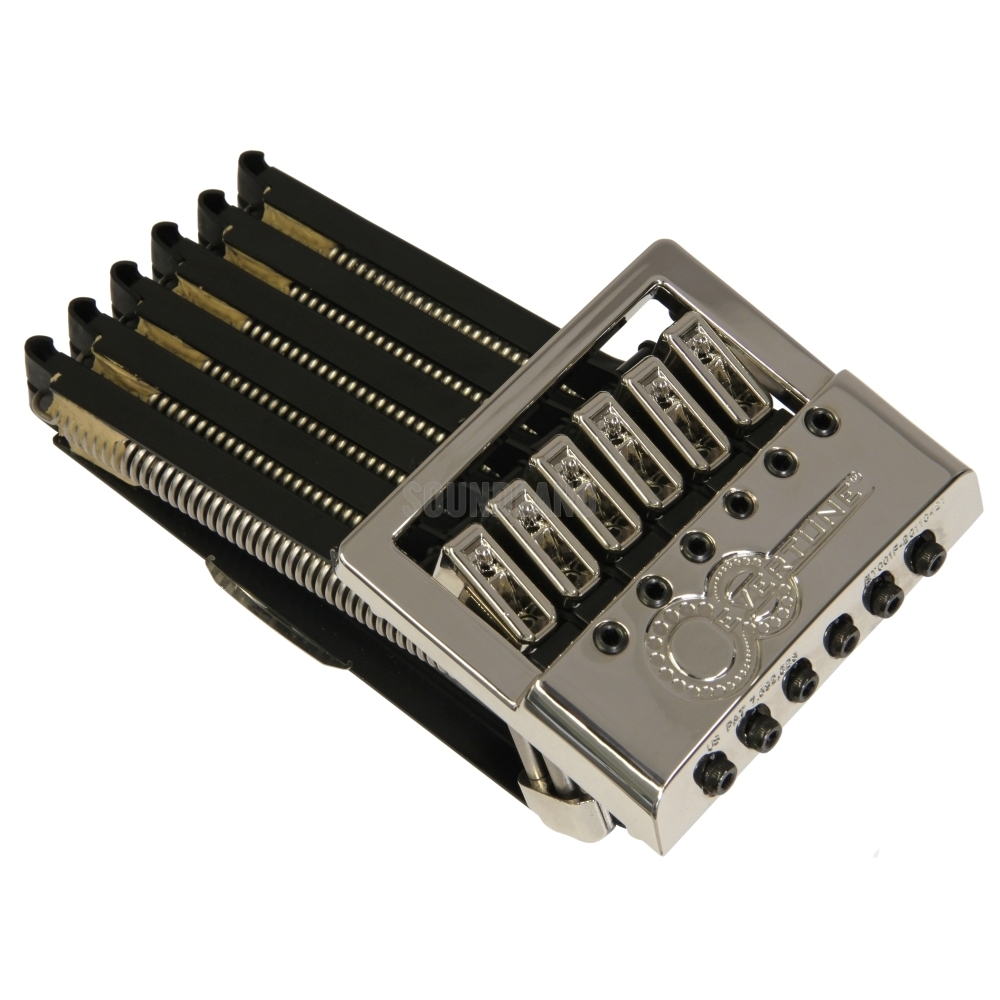
Can we get some equalizer?
I want to talk about the equalizer in the guitar. This is mainly something added to acoustic guitars with some electronic elements in it, although there are some electric guitars with build-in equalizers. The sound of electric guitars is normally controlled by the amplifier or an equalizer pedal, so an equalizer is not build in the electric guitar that often.
Fancy picture:
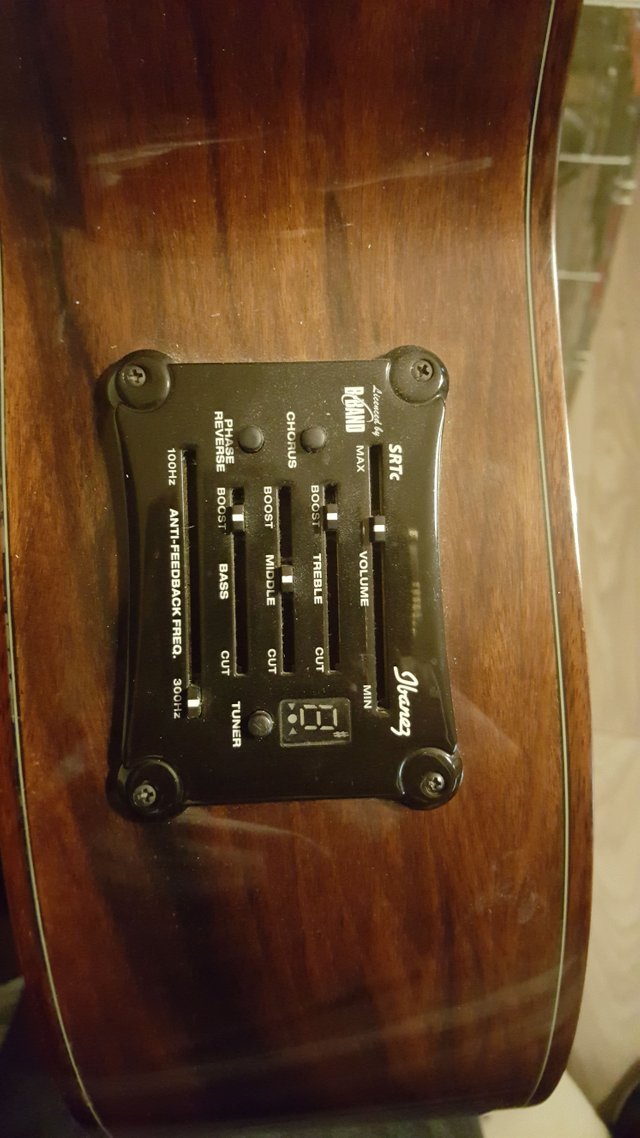
This equalizer makes me able to change the sound color of the acoustic guitar when amplified. I can make the acoustic guitar sound warmer and fuller or, if I would like to, brighter and sharper.
This is the end of part 2, see the next blog entry for part 3 (Last entry of this subject)
https://steemit.com/music/@jvhteach/0-1-parts-of-a-guitar-remastered-2018-blog-addon-entry-part-3
Really interesting and comprehensive break down of the different elements of various guitar types @jvhteach. I play acoustic but I have learnt some new things today reading your blog. Nice one :-)
Thanks for enjoying. It's my love for music and teaching which made me create JVHteach as a learning platform 4 years ago. I love what I do and love that I can share my love for music to other people. I am somehow trying to balance between being comprehensive and at the same time keeping it easy to understand for people new playing guitar, but I hope I'm doing a good job explaining it this way. The plan is to create a full blog entry for every Dtube video lesson I upload, with added in depth information linked to that video. Love that you're commenting! Means a lot to me!